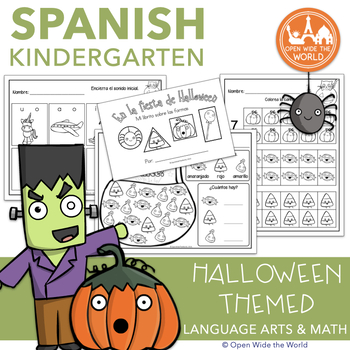Spanish Dual Language Kindergarten Halloween Pack
- PDF
Description
Spanish Dual Language/Immersion Halloween mini pack for Kindergarten. (Grade 1 in some Canadian provinces) No English on student pages!
This Halloween-themed mini pack includes:
LANGUAGE ARTS
♦ Word wall/writing center cards x 16
♦ Writing/drawing prompt
♦ Pumpkins bubble map
♦ Initial vowel sound worksheet
♦ Alphabet tracing and fill-in-the-blank worksheet
♦ Upper/lower case letter matching center activity
MATH
♦ Color the largest pumpkin in the group
♦ Counting 1-10 objects in scatter configuration
♦ Color the stated amount in a 10-frame
♦ Color and count candies
♦ Halloween AB pattern completion cut-and-paste
♦ Halloween shapes cut-paste-and-read mini-book
HALLOWEEN
♦ Sorting by category: Halloween vs. non-Halloween
♦ “My Halloween Costume” drawing sheet
♦ "How to carve a pumpkin" cut-and-paste
********************************************************************************
If your students enjoy this Halloween-themed kindergarten packet, be sure to check out these seasonal packets, too:
Spanish DL/I Kindergarten Día de los Muertos packet
Spanish DL/I Kindergarten Apple Packet
Spanish DL/I Kindergarten Thanksgiving pack
Spooky clip art by Our Monitos
Your feedback is greatly appreciated, and REWARDED! Thank you for leaving a comment.





